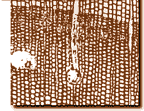
Uses for Weather-Bos™ (i.e. roofs, sidings, fences)
Industries using
Weather-Bos™ (i.e. architects, contractors, wood product
manufacturers)
The advantages of Pre-
Staining your wood
How Much Weather-Bos™
do I Need?
Why does wood turn grey
and dull?
The science behind the
stains which occur on wood.
How to Become a
Weather-Bos™ Distributor/Manufacturer
 |
|||
|
Free Orderline 1-800-664-3978
|
|||

 The condition: Wood is often
preferred for decks because of its appearance, stability and durability.
However, without proper protection along with an ongoing maintenance
program the deck will deteriorate and change color.
The condition: Wood is often
preferred for decks because of its appearance, stability and durability.
However, without proper protection along with an ongoing maintenance
program the deck will deteriorate and change color.
Salespeople as well as consumers believe in the legendary magical deck. Although a deck is subject to the same climatic conditions as the siding, windows and roof, etc., consumers often refuse to acknowledge that a deck requires maintenance. Imagine your laundry on a clothesline left to hang above your deck through a year of rain, wind, snow, air-pollution, etc. Would the clothes remain clean and beautitul because they were washed by the rain?
Likewise, would your once beautiful deck beneath the clothesline remain free from the elements that damage and change the appearance of the laundry? The average consumer somehow expects the deck to look beautiful without on going maintenance.
People will wash their dishes, vacuum their carpets, mow their lawns, wash their cars, etc. However, they rarely maintain their decks! What kind of logic is this? In addition, consumers allow abusive activities on their deck such as:
- Household animals to live and eat on the deck.
- Recreational activities including barbecue, family gatherings, sportingevents, etc.
- Household and auto repairs.
Your deck was meant for family entertaining, consequently it often receives more abuse than the entire home. Common sense dictates that you must spend time, effort and yes, money; if you want to maintain the original appearance, the same as with your automobile. Imagine a new $20.000. automobile in your driveway that you have never washed, vacuumed or cleaned the windshield. Would that car always look new as a result of being washed by rain?
 The
photo to the right is a cut piece of wood viewed through a microscope. It
appears as a honeycomb comprised of many microscopically small cells.
Whenever a honey comb is cut the entire surface has open cells regardless
of how carefully it is cut. Likewise, wherever a board is cut, the
surface will have cells which are exposed like little
"catch-basins." Imagine for a moment, a red table covered with
red bowls. At a distance the table appears solid red. Now, imagine
Cheerios poured into the empty bowls. As the bowls become full, the
dominant color changes from red to the color of the Cheerios. On an
actual wood surface, the exposed cells are similar to our hypothetical
cereal bowls.
The
photo to the right is a cut piece of wood viewed through a microscope. It
appears as a honeycomb comprised of many microscopically small cells.
Whenever a honey comb is cut the entire surface has open cells regardless
of how carefully it is cut. Likewise, wherever a board is cut, the
surface will have cells which are exposed like little
"catch-basins." Imagine for a moment, a red table covered with
red bowls. At a distance the table appears solid red. Now, imagine
Cheerios poured into the empty bowls. As the bowls become full, the
dominant color changes from red to the color of the Cheerios. On an
actual wood surface, the exposed cells are similar to our hypothetical
cereal bowls.
On all exterior surfaces the following three substances naturally collect:
- Microscopic particles (dust).
- Emissions (air pollution).
- Pollens (present everywhere).
Particles larger than the cells will be blown away by wind or washed off by rain. Smaller particles will fall into the cavity and become trapped by gravity, just as the "Cheerios" fell to the bottom of the bowls. Air pollution has become another contributing factor by creating an oily film on the surface, and by adding natural occurring pollens to the equation, creates an environment for constant maintenance. As a result, when the open cells are filled the color changes to grey, which is the color of the combined dust, emissions and pollens.

 |
|
 |

|
||||||||||||||||||||||||||||||||||||||


